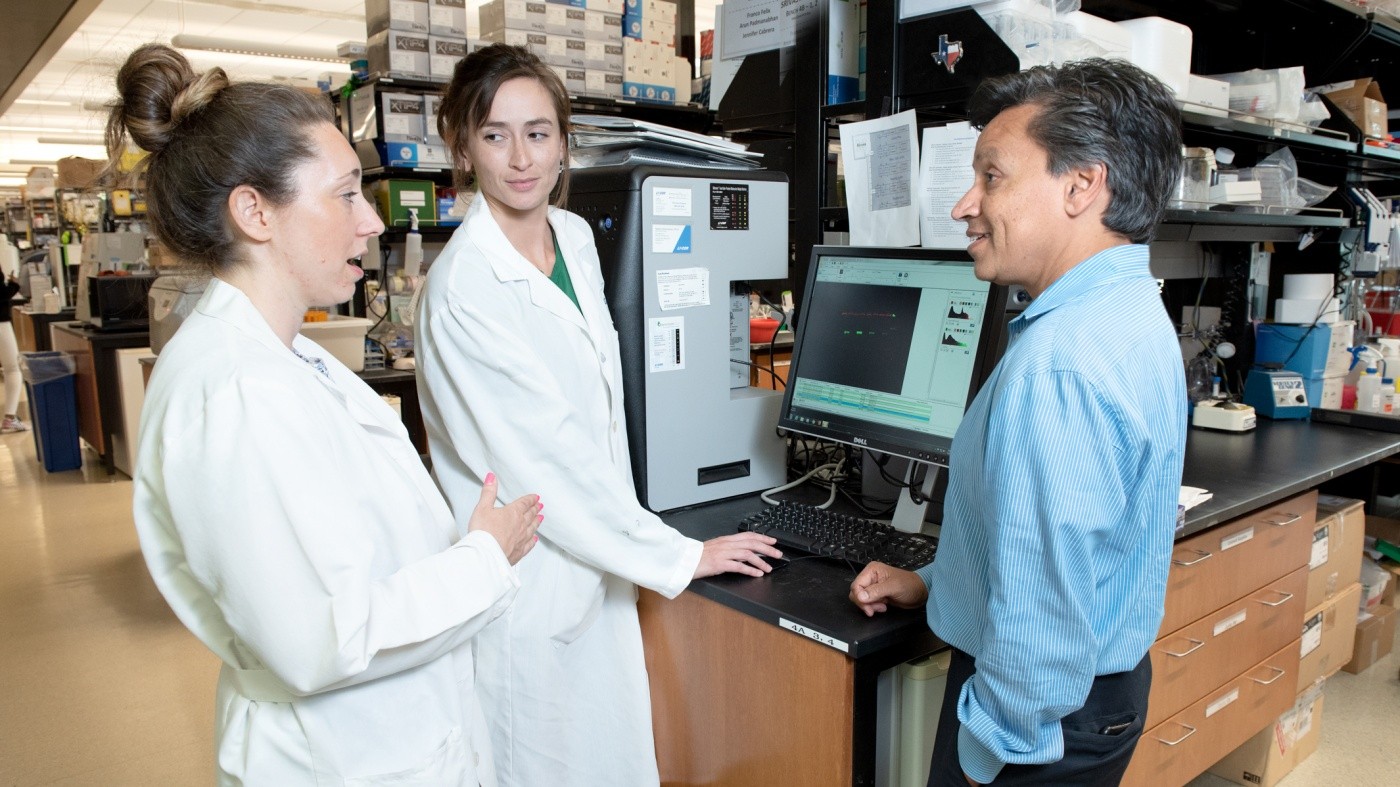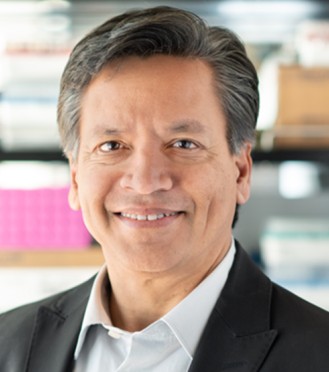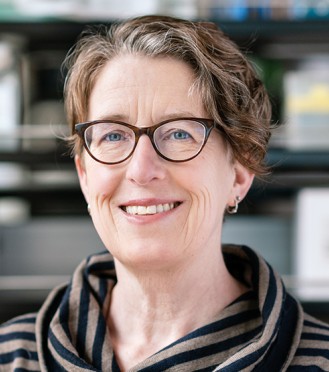Gladstone NOW: The Campaign Join Us on the Journey✕

Gladstone scientists Casey Gifford (left), Nicole Stone (center), and Deepak Srivastava (right) gain important insights into the cellular reprogramming process.
One of the problems at the center of regenerative medicine is our lack of understanding of how to coax adult cells in the body into becoming a different type of cell. The ability to directly reprogram the fate of a cell in this way would allow the scientific and medical communities to repair tissue damaged by events such as heart failure or spinal cord injury, using cells already in the patient’s body.
Deepak Srivastava, MD, senior investigator and president of Gladstone Institutes, and his team have already made significant progress in this field. Several years ago, they discovered how to directly transform support cells in the heart, called fibroblasts, into cardiomyocytes, which are beating heart muscle cells. This transformation is known as direct reprogramming, because the cells don’t need to be reverted back to a stem cell–like stage before they change.
To successfully reprogram cells in the heart, Srivastava’s team used a cocktail of proteins that control gene expression they refer to as GMT—which stands for the three transcription factors Gata4, Mef2c, and Tbx5. Each of these control the transcription of thousands of other genes and are critical for normal heart formation. Yet, the researchers didn’t quite understand exactly how this combination of proteins worked to facilitate the reprogramming event.
"Through modeling this data with machine learning, we were able to discover how only a few proteins can modify the way the whole genome is read and which other proteins execute on that message.”
In a recent study published in the journal Cell Stem Cell, the scientists answered important and long-standing questions that finally explain the process of direct reprogramming of fibroblasts into beating heart cells. Using a variety of cutting-edge technologies, Srivastava’s team, in close collaboration with Gladstone Senior Investigator Katherine Pollard, PhD, and her group, took a comprehensive approach to solving the problem.
“To truly understand how the GMT cocktail functions, we wanted to study how the whole genome responds to these proteins,” explained Nicole Stone, PhD, a postdoctoral scholar in Srivastava’s lab and one of the lead authors of the study. “We added the proteins to cells, alone and in various combinations, and observed their effects on the genomic landscape. We also used machine learning techniques to filter through the enormous amount of data our work generated and identify new transcription factors that could potentially be important for the reprogramming process.”
This was a large-scale undertaking. The researchers studied nearly 30,000 single cells and six time points spanning 2 weeks, using a battery of state-of-the-art whole-genome analysis techniques and machine learning to glean greater insights from the data.
“It’s remarkable what new technologies and computational approaches are allowing us to achieve today,” said Pollard, a co-senior author of the study, who is also director of the Gladstone Institute of Data Science and Biotechnology, as well as a professor at UC San Francisco, and a Chan Zuckerberg Biohub investigator. “Searching for changes across the entire genome as cells alter their fate generates vast amounts of data. Through modeling this data with machine learning, we were able to discover how only a few proteins can modify the way the whole genome is read and which other proteins execute on that message.”
Through this massive effort, the scientists assembled a comprehensive and chronological description of what happens during reprogramming, shedding light on the precise role of transcription factors during this process and how they work together to transform the fate of an adult cell.
As part of the study, the researchers wanted to understand how GMT could give rise specifically to cardiomyocytes, given that these proteins are present in tissues other than the heart. They found that the three proteins act together, but the effects of their combination vary depending on context. They demonstrated that, in fact, GMT proteins manipulate a cell’s chromosomes to allow other transcription factors that are specific to cardiac cells to bind to the DNA and reprogram the cell.
“In addition, we noticed that after we added the GMT cocktail to fibroblast cells, the hallmarks of reprogramming to cardiomyocytes were visible within 48 hours,” said Casey A. Gifford, PhD, a staff scientist at Gladstone who is the study’s other lead author.
“This study shows mechanistically how one adult cell can change to another and points to new ways to make the process of generating cardiomyocytes directly in the heart even more efficient,” added Srivastava, who is also a pediatric cardiologist at UCSF Benioff Children’s Hospital and a professor of pediatrics at UC San Francisco. “This could lead to promising new therapies to heal cardiac tissue after heart failure.”
For Media
Julie Langelier
Associate Director, Communications
415.734.5000
Email
About Gladstone Institutes
Gladstone Institutes is an independent, nonprofit life science research organization that uses visionary science and technology to overcome disease. Established in 1979, it is located in the epicenter of biomedical and technological innovation, in the Mission Bay neighborhood of San Francisco. Gladstone has created a research model that disrupts how science is done, funds big ideas, and attracts the brightest minds.
Support Discovery Science
Your gift to Gladstone will allow our researchers to pursue high-quality science, focus on disease, and train the next generation of scientific thought leaders.
Genomic Maps Untangle the Complex Roots of Disease
Genomic Maps Untangle the Complex Roots of Disease
Findings of the new study in Nature could streamline scientific discovery and accelerate drug development.
News Release Research (Publication) Marson Lab GenomicsSix Gladstone Scientists Named Among World’s Most Highly Cited Researchers
Six Gladstone Scientists Named Among World’s Most Highly Cited Researchers
The featured scientists include global leaders in gene editing, data science, and immunology.
Awards News Release Corces Lab Doudna Lab Marson Lab Pollard Lab Ye LabThe Genome Editing Playbook Is Different in Neurons
The Genome Editing Playbook Is Different in Neurons
The striking findings of a new study could influence how gene therapies are designed for many genetic diseases.
News Release Research (Publication) Neurological Disease Conklin Lab Doudna Lab CRISPR/Gene Editing





